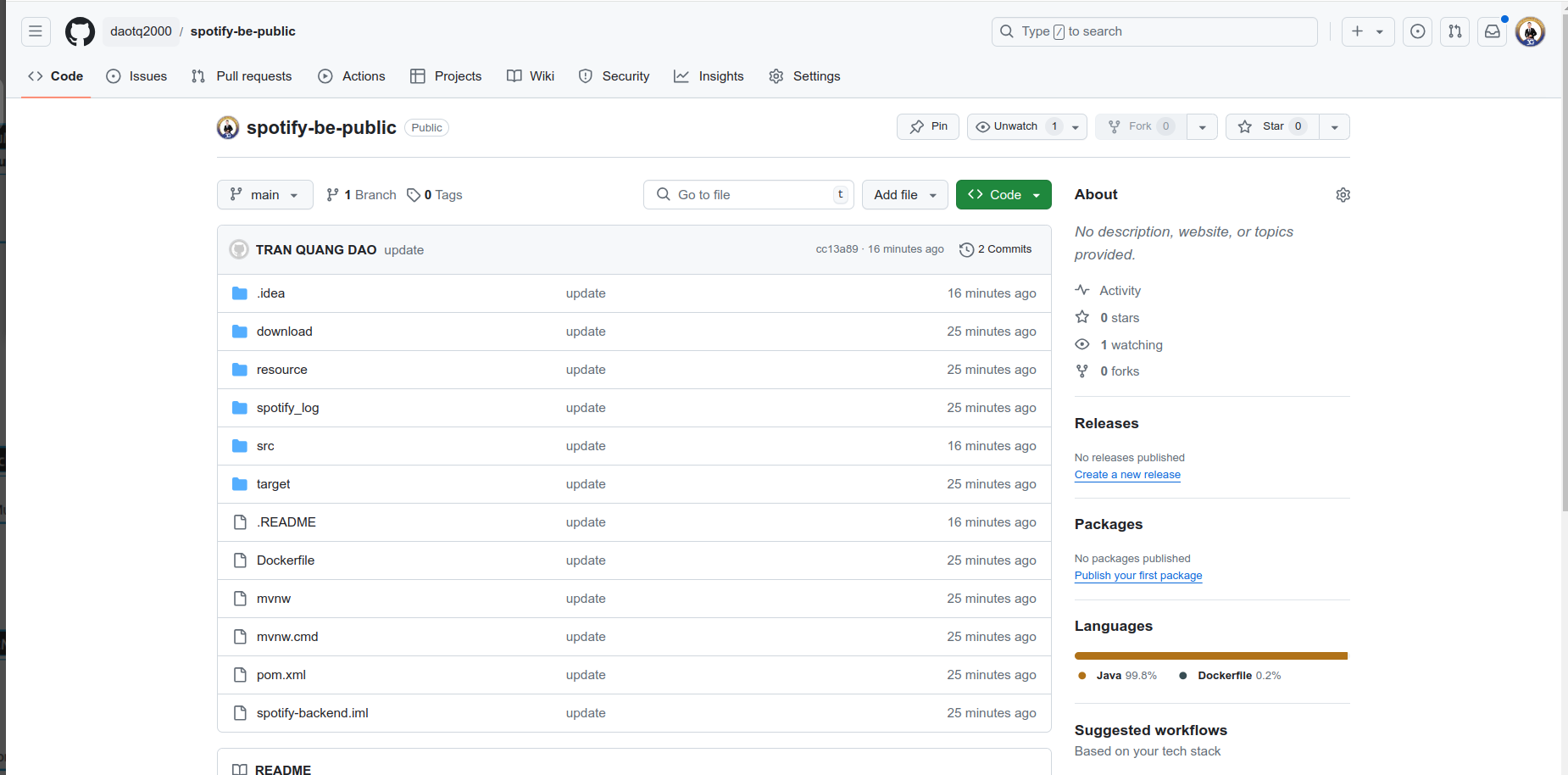Development of the Backend System
Introduction:
In this challenge, the backend system is the core component of the Music Serverless Application. It is responsible for handling all business logic, processing requests, managing data, and ensuring the application’s smooth operation. The backend will be built using Java and the Spring Boot framework, leveraging a variety of AWS services to ensure scalability, reliability, and performance.

Source Code: https://github.com/daotq2000/spotify-be-public
You can inspect my source code at github, about detail structure, process and how to build Rest API with Spring Boot Framework
Necessary Resources:
- Development Tools:
- IDE: IntelliJ IDEA or Eclipse for Java development.
- Build Tool: Maven or Gradle for managing project dependencies and building the application.
- Version Control: Git for source code management and collaboration.
- Containerization: Docker for creating container images of the backend application.
AWS Services:
- Amazon Fargate: For deploying and managing the containerized backend application.
- Amazon Aurora MySQL: For database management, providing high performance and availability.
- Amazon ElastiCache (Redis): For caching frequently accessed data to improve application performance.
- Application Load Balancer (ALB): For distributing incoming traffic across multiple instances.
- Internet Gateway: For enabling internet access to the application.
- Auto Scaling Group: For automatically adjusting the number of running instances based on demand.
-Infrastructure as Code:
- Terraform: For defining and provisioning the AWS infrastructure, ensuring consistent and reproducible environments.
Language Development:
- Primary Language: Java
- Framework: Spring Boot
Key Dependencies:
- Spring Web: For building RESTful web services.
- Spring Data JPA: For database access and ORM.
- Spring Security: For authentication and authorization.
- Spring Cache: For integrating with Redis and caching data.
- MySQL Driver: For connecting to the Amazon Aurora MySQL database.
- Redis Client: For interacting with Amazon ElastiCache (Redis).
- Cloudinary: For save file, media resources.
Development Process:
1.Project Setup:
- Initialize a new Spring Boot project with necessary dependencies.
- Set up version control with Git and create a repository.
2.API Development:
Define RESTful endpoints for various functionalities like user management, music streaming, playlist creation, etc.
Implement service layer logic to handle business processes.
Create repository classes for database interactions using Spring Data JPA.
3.Database Integration:
- Configure the application to connect to Amazon Aurora MySQL.
- Define JPA entities and repositories for data modeling and access.
- Implement data validation and migration scripts if necessary.
4.Caching:
- Integrate Redis for caching frequently accessed data.
- Configure Spring Cache to use Redis as the cache provider.
- Implement caching strategies to optimize performance.
5.Security:
- Implement authentication and authorization using Spring Security.
- Configure JWT (JSON Web Tokens) for secure and stateless authentication.
6.Testing:
- Write unit tests for individual components using JUnit and Mockito.
- Implement integration tests to ensure end-to-end functionality.
7.Containerization:
- Create a Dockerfile to containerize the Spring Boot application.
- Build and test the Docker image locally.
8.Deployment:
- Use Terraform scripts to provision AWS resources (Fargate, Aurora MySQL, ElastiCache, ALB, etc.).
- Deploy the containerized application to Amazon Fargate.
- Configure the Application Load Balancer and Auto Scaling Group for high availability and scalability.
9.Achieved Results:
Robust Backend System:
A fully functional backend system developed using Java and Spring Boot, capable of handling various music application functionalities. Scalable and Reliable Infrastructure:
An AWS-based deployment architecture that ensures high availability, scalability, and reliability using services like Fargate, Aurora MySQL, ElastiCache, and ALB. Improved Performance:
Optimized data access and application performance through effective caching strategies with Redis. Security and Authentication:
Secure user authentication and authorization mechanisms implemented using Spring Security and JWT. Automated Infrastructure Management:
Infrastructure as Code (IaC) using Terraform, enabling automated and consistent provisioning of AWS resources. Comprehensive Documentation and Testing:
Detailed documentation of the backend system, setup processes, and deployment steps. Thorough testing to ensure the reliability and correctness of the application. By completing this backend development, you will have a robust foundation for the Music Serverless Application, capable of handling real-world traffic and scaling efficiently on AWS.